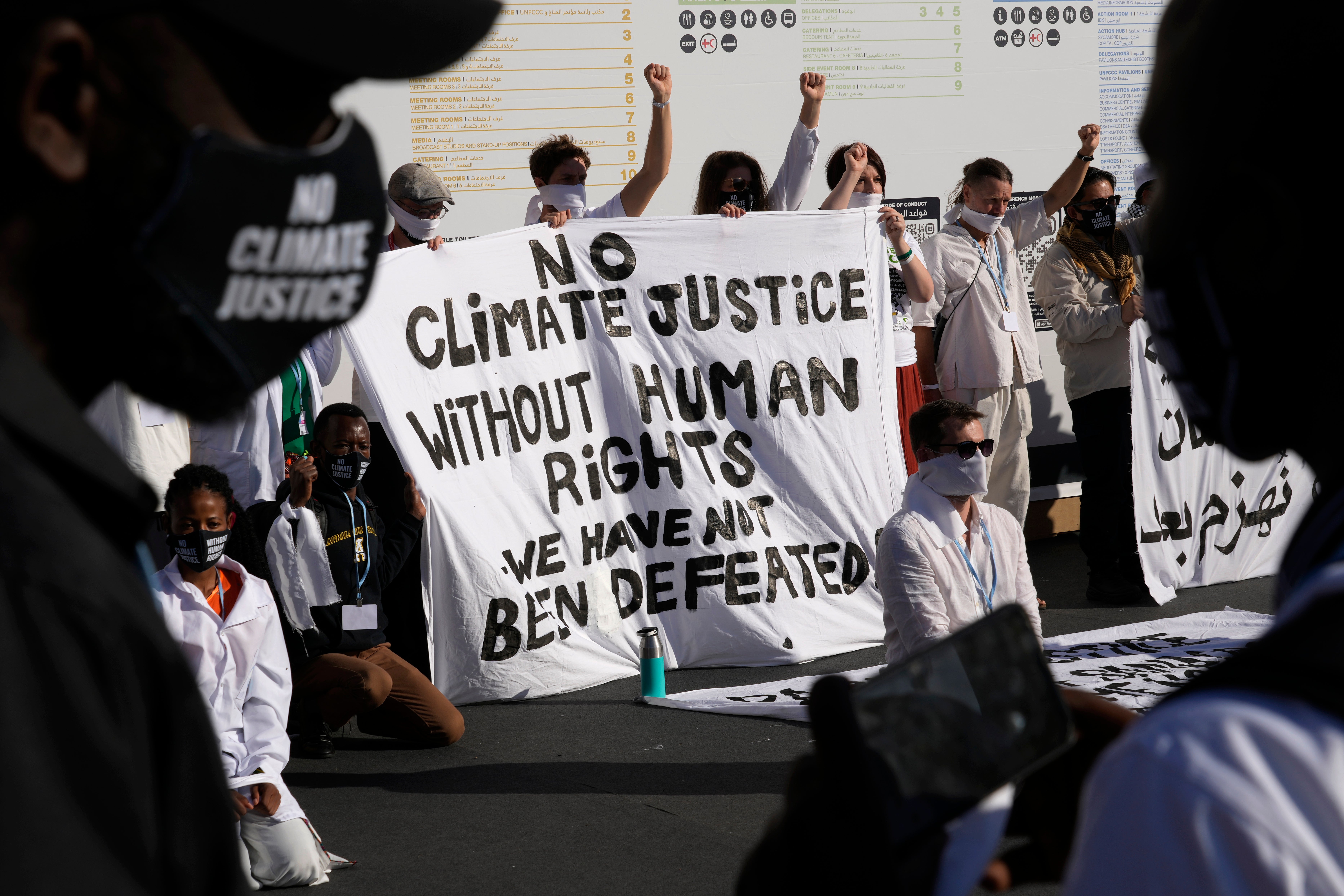The dust has settled on Cop27. Here’s what we can make of its failures
Little was done to more dramatically cut the carbon emissions heating the planet, writes Louise Boyle, who travelled to Sharm-el-Sheikh last month for the summit


It’s been a few weeks since the final gavel came down on Cop27, the United Nations’ annual climate conference, held this time around in Sharm el-Sheikh.
I travelled there with my colleagues, Saphora Smith and Stuti Mishra, to report on how the world is progressing in its bid to cut planet-heating greenhouse gas emissions and protect the most vulnerable from a worsening spiral of floods, fire, storms and drought.
It was, in short, a mixed bag.
From the outset, the resort town of “Sharm” was in near-total lockdown. In Egypt, where freedom of speech is severely restricted and tens of thousands of activists have been jailed, the weight of state apparatus was never far away – even prompting a rebuke from the leading UN human rights body during the summit.
There was progress in the shape of a historic “loss and damage” fund – long called for by countries already bearing the brunt of severe climate impacts. Wealthy countries reversed their opposition to the fund in Cop27’s final hours.
However, the conference did little to more dramatically cut the carbon emissions heating the planet. The final agreement failed to call for phasing down fossil fuels, the primary driver of the climate crisis.
There was also a very real fear that Cop27 would drop the goal of keeping 1.5C “alive” — the global temperature limit beyond which scientific evidence shows that extreme weather and other events become increasingly catastrophic.
Emissions must be slashed in half in the next eight years to hold the line at 1.5C. But efforts so far would cut less than 1 per cent by 2030, leaving the world heading for 2.8C of global heating by the end of the century.
The most vulnerable small island states and developing countries have declared missing that target a “death sentence” — and the truth is that no country will be insulated from havoc and suffering at that temperature rise.
Cop27 didn’t quite abandon the 1.5C target, nor did it build on progress made at Cop26 in Glasgow last year.
During a panel with The Independent on Tuesday, Tina Stege, climate envoy for the Marshall Islands, explained how she makes sense of such failure. Her tiny island nation of 50,000 people in the middle of the Pacific is just two metres above sea level. Even at the world’s most ambitious 1.5C goal, the country will experience at least half a metre of sea-level rise and a perilous future of painful losses. The Marshallese, and many others in the “high ambition” climate coalition that they chair, don’t have the luxury of giving in.
Stege recalled that at Cop26, the lack of progress she saw being made on loss and damage was “one of the most difficult moments of my career”. But often, where you fail at one Cop can be a foundation for succeeding at the next, she added.
“I think that experience is directly what led to the establishment of [a loss and damage] fund at Cop27,” she said. “I keep those moments in mind when I look at what we’re facing with fossil fuel phase-out. The fact that we failed at that during this Cop will drive [us] to rally those progressive countries to push for higher ambition to make sure that this is a line in the sand at Cop28.”
Yours,
Louise Boyle
US senior climate correspondent
Join our commenting forum
Join thought-provoking conversations, follow other Independent readers and see their replies
Comments
Bookmark popover
Removed from bookmarks